Content
Strawberries are the most common berry that can be found in almost every home garden. Thanks to the difficult long-term work of breeders in recent decades, many varieties of this berry have appeared, symbolizing the long-awaited, sunny summer. Gardeners often choose strawberry varieties, focusing on the resistance of plants to diseases and pests, the quantity and quality of the berry harvest, and the duration of fruiting. And among the variety of species on the market, strawberry Garland compares favorably with its qualities, a description of the variety, a photo, reviews of which you will learn from this article.
Brief characteristic of the variety
The strawberry variety was bred by the Russian breeder Galina Fedorovna Govorova. Professor of the Timiryazev Academy, Honored Doctor of Agricultural Sciences, she has been working all her life to develop new varieties of strawberries that are highly resistant to diseases, pests and special climatic conditions. Many varieties bred by Govorova have received well-deserved recognition among gardeners and have been successfully zoned in many regions of our country.
Strawberry Garland - one of more than 30 varieties of garden strawberries, which has a genetic feature - to bear fruit almost to frost. As long as the sun shines outside, strawberry bushes bloom wildly and give a generous harvest. For this reason, the Garland belongs to the remontant varieties.
The secret of the popularity that this plant has won lies in the description of the Garland strawberry variety. And the numerous reviews of gardeners who managed to appreciate the excellent qualities of the fruits only confirm these characteristics.
Varietal features
Garland's bushes are spherical, small in size, up to 20-25 cm in height, with medium foliage. The leaves are mainly of medium size, oval in shape, the edges are jagged. The color of the leaf plates is bright green, with a bluish or bluish tint.
The mustache is green with a pale pink tint. Moderate consumption, which is one of the advantages of the Garland.
Strawberry Garland bears fruit continuously from May to almost October. The bushes are constantly covered with flower stalks, forming ovaries and ripening berries. But it should be noted that for abundant fruiting, it is necessary to follow the rules of agricultural technology. Particular attention should be paid to timely feeding, because with this type of fruiting, the plant needs a lot of nutrients.
The originator of the variety, Govorova GF, called this variety "curly", and she had good reasons for that. The first mustache appears on the bushes within a few weeks after planting the Garland strawberry. It is on these mustaches that rosettes are formed, which soon become covered with many peduncles.
For this reason, the Garland can also be used for decorative purposes. Bright green bushes, covered with flowers and berries, growing in hanging pots, containers or flowerpots, attract attention and delight the eye. This variety is also suitable for growing in an upright position.
Flowers of both sexes are simultaneously present on the bushes, which is of great importance for pollination and timely formation of berries.
Strawberry Garland berries have a conical shape, bright red in color. Fruit weight varies from 25 to 32 grams. The pulp is light pink with a pronounced strawberry aroma. In terms of taste, the fruits received a very high rating - 4.1 points.
The yield of remontant strawberries Garland, subject to the rules of agricultural technology per season, reaches up to 616 centners per hectare, or up to 1-1.2 kg per 1 bush. Berries tolerate transportation well, keeping excellent presentation and taste characteristics for a long time.
According to the description of the variety declared by the originator, the Garland strawberry has an average resistance to frost and drought, but does not react well to waterlogging of the soil.
Advantages and disadvantages
When choosing plants that every summer resident would like to have on his site, advantages and disadvantages are of great importance. The advantages of Strawberry Garland, judging by the description of the variety, are difficult to overestimate:
- ease of growing;
- moderate tempering;
- long and abundant fruiting;
- high productivity;
- excellent transportability while maintaining the presentation and taste.
Garland has only one drawback - strawberries are critical to waterlogging, which is the cause of plant diseases with fungal diseases.
Reproduction methods
Strawberry Garland, according to the description of the variety and gardeners' reviews, reproduces perfectly in three ways:
- mustache;
- dividing the bush;
- seeds.
In order to successfully grow strawberries and please loved ones with tasty, aromatic berries, it is important to know in what way, at what time of the year and how to properly cultivate this variety.
Planting strawberries with a mustache or dividing the mother bush can be carried out both in spring and in the second half of August. Moreover, the first two breeding methods are the most common. Fruiting of strawberries begins almost immediately after rooting of the rosettes.
Seed propagation takes a little more time and effort. In this case, it is important to observe a number of the following recommendations:
- pour a thin layer of drainage into the prepared containers and fill them 3/4 with soil;
- moisten the soil with a spray bottle and spread the strawberry seeds over the surface;
- place the container in a dark, cool place for 1-1.5 months;
- after the allotted time, remove the containers with seeds, lightly sprinkle with a thin layer of soil, sprinkle with warm water and place on the windowsill for germination;
6 - the air temperature during germination of strawberry seeds should be at the level of + 18˚С + 22˚С. You need to water the plantings 2-3 times a week.
After the strawberry seedlings grow up, they can be dived into separate containers or transplanted into open ground.
Secrets of growing strawberries from the seeds the author of the video will open for you
How to choose the right planting material
The key to a plentiful and high-quality harvest is always the correct choice of planting material. Before growing a remontant strawberry Garland, pay attention to some of the nuances:
- the soil for growing strawberry seedlings should be loose and fertile, and also allow moisture to pass through well;
- strawberry bushes must be carefully sorted;
- each seedling must have a well-formed rosette and 3-4 full leaves;
7 - the root system must be developed and formed;
- all seedlings should have a healthy, blooming appearance.
Strawberry seedlings that have a sickly appearance or poorly developed root system will hurt for a long time after planting. And it makes no sense to wait for a good harvest from such plants.
Preparing the soil and planting site
Proper soil preparation when growing strawberries is an important component of the future harvest. Therefore, you need to approach this point with great care.
When growing strawberries outdoors, it is important to know that they grow well in almost any soil. Exceptions are loams and soils with a high peat content.
The place for the Garland should be sunny and open. It is undesirable to plant strawberries in areas with a close occurrence of groundwater or where rain and melt water stagnate.
The site chosen for planting must be thoroughly dug up in advance and thoroughly to a depth of at least 25-30 cm. Before that, put into the ground:
- if the soil is acidified - wood ash in the amount of 0.5 buckets per 1 m²;
- if the ground is heavy - 3-4 kg of sand per 1 m²;
- if the soil is scarce - humus or humus in the amount of 5-7 kg per 1 m².
Dig up the area and leave for 1.5-2 weeks for the soil to shrink. When growing strawberries, it is advisable to raise the garland of the garden by 30-40 cm.
When and how to plant correctly
You can start planting strawberries in the spring in the central regions and the Moscow region in late April - early May. In the south of Russia, the recommended dates come 2-3 weeks earlier. But in the Urals or Siberia, it is not worth planting strawberries in open ground before mid-May.
If you chose the autumn season for planting, then the ideal period is from the second half of August to the end of September. This gives the strawberry bushes plenty of time to root and prepare for winter.
Planting strawberries Garland should be in the early morning or after 17.00 hours. For better rooting, it is desirable that the weather is not too hot. In this case, you do not have to shade the landing.
In general, the rules for planting Garlands practically do not differ from the rules for planting strawberries of other varieties. The recommended planting pattern is 30 X 30 cm.
The planting pits should be spacious so that the root system is located freely in it. At the bottom of the hole, make a small mound on which to carefully place the strawberry roots. Fill the voids with soil. Compact the soil slightly at the base of the bush.
Water the plantings liberally with warm water. In the next few days, if the weather is hot outside, take care of shading the strawberry bushes.
When growing strawberries, Garland does not require special skills and abilities, and a novice gardener can also cope with this matter.
Growing and aftercare
Strawberry Garland, judging by the description of the variety, photos and reviews, is unpretentious in cultivation. Subsequent care of the beds will require minimal costs and consists in performing the standard procedures for each summer resident:
- timely watering;
- regular feeding;
- loosening;
- preventive treatment against diseases and insects;
- weeding.
Water the strawberries as the soil dries. Abundant watering is not required for plantings. In this matter, it is important not to overdo it, since excessively wet soil is the first cause of fungal diseases.
Top dressing should be treated with extreme caution. Organic fertilizers, such as humus or humus, can be fed to strawberries no more than once a month. Fertilize plantings with herbal infusions or liquid mullein solution 2 times a month.
You can fertilize Garland strawberries with mineral fertilizing 2-3 times a month. Before the appearance of the first peduncles, feed the plantings with solutions based on nitrogen, but during the fruiting period, preference should be given to compositions based on potassium and phosphorus.
Through regular loosening, you will provide sufficient air access to the root system, which will have a positive effect on the growth and fruiting of strawberries.
Timely weeding will help protect strawberries from insect infestations and prevent the onset and spread of fungal diseases. Moreover, in clean beds, the strawberry yield increases significantly.
Description of remontant strawberries Garland and cultivation techniques speak of the ease of reproduction of the variety, high yield, excellent taste of fruits and unpretentious care.
Scope of the fruit
You can enjoy the fragrant and delicious berries of the Garland strawberry variety not only fresh. Careful housewives will always find where they can apply fresh berries that have just been picked from the garden.
In addition to the traditional strawberry jam, you can make:
- juices, compotes, fruit drinks, smoothies;
- yoghurts and dairy drinks with berries;
- jams, confitures;
- dumplings with strawberries;
- pies and pies.
In addition to common dishes, Garland strawberries can be frozen whole or chopped. Drying is another way to preserve and prepare the harvested crop for the winter.
Conclusion
According to the description, reviews and photos, the Garland strawberry is worthy of taking a place in the beds on almost every personal plot. Stable fruiting throughout the season, a high appreciation of the palatability of the fruit, simplicity in cultivation, a wide range of applications - these are just some of the advantages of this variety, which may help you make a choice in favor of Garland strawberries.
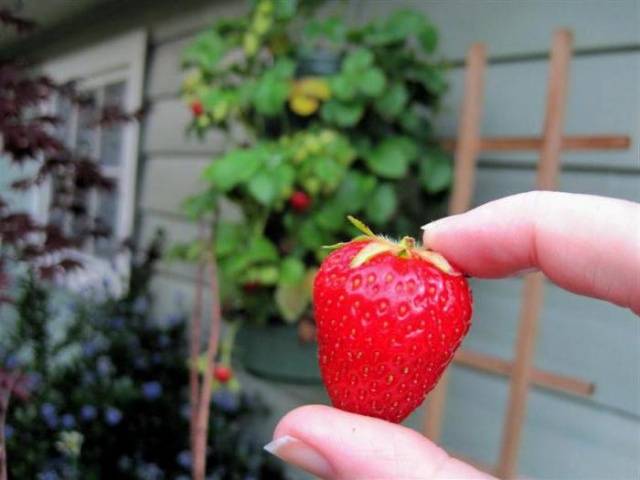
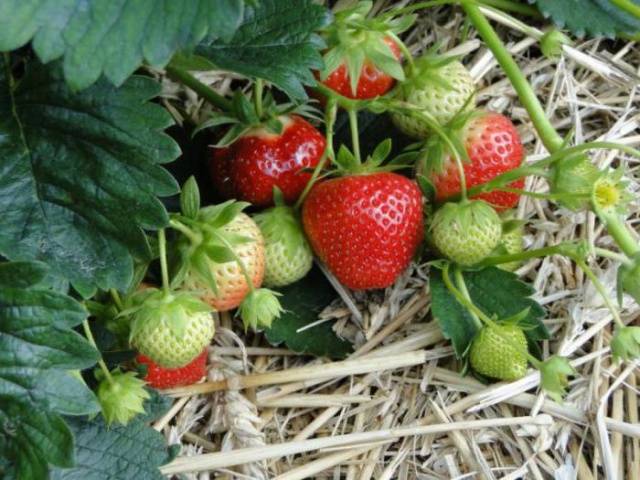
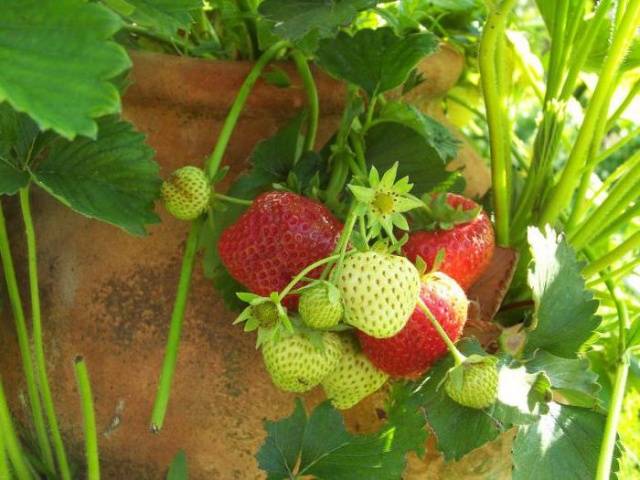

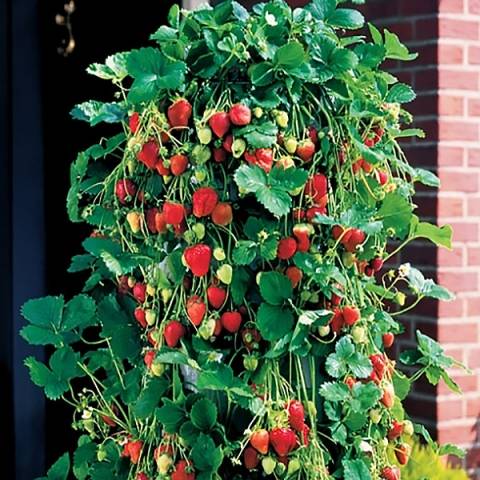

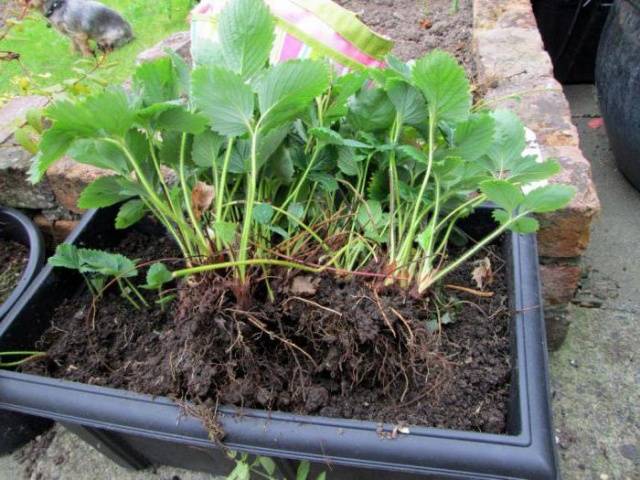
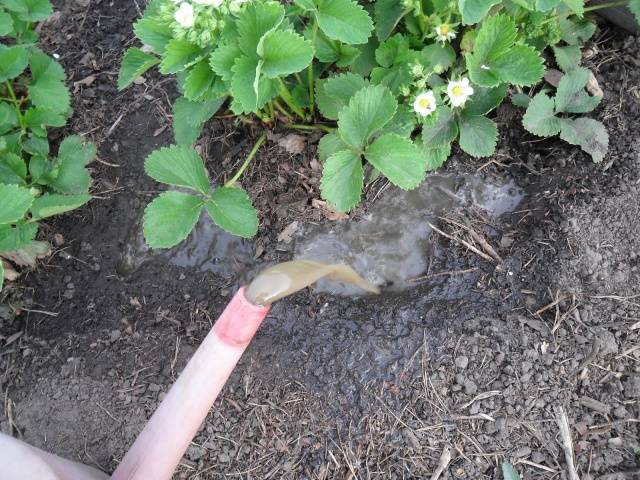










Hello, I want to share my impressions. She is not just good, but super. Everything that is written in the description is 100% true. Tasty, beautiful, fragrant, juicy, tender and fruitful. Maybe the summer is so hot, but wait and see. I recommend.And I also forgot one moment - she has practically no mustache and there is little foliage on the bushes, but there are a lot of ovaries. Thanks to Galina Fedorovna Govorova for her development.